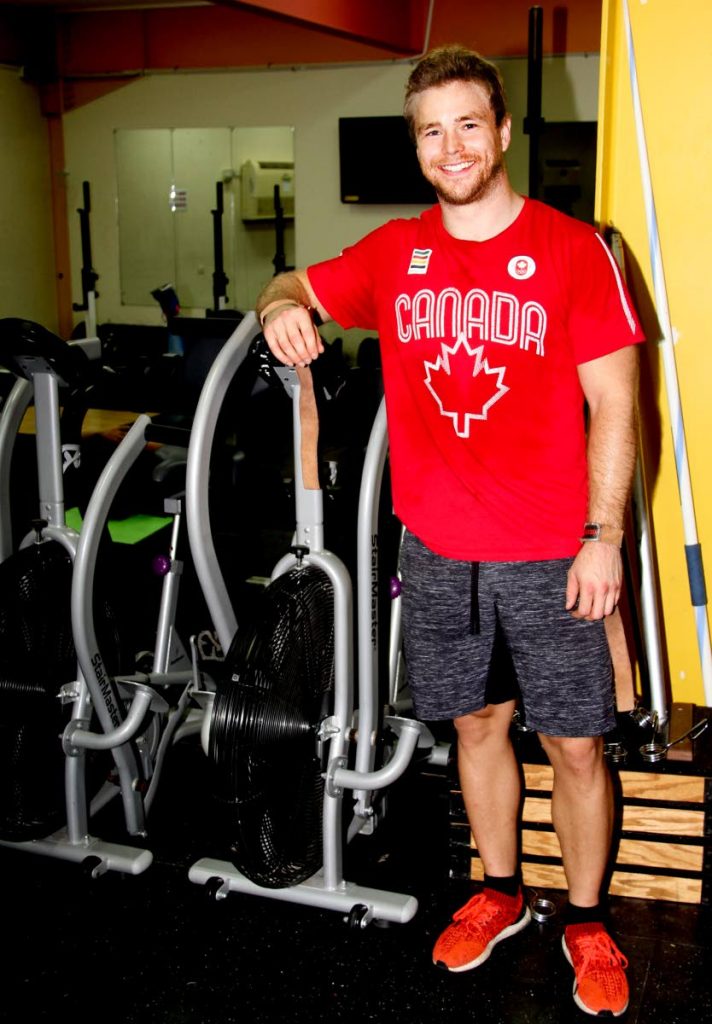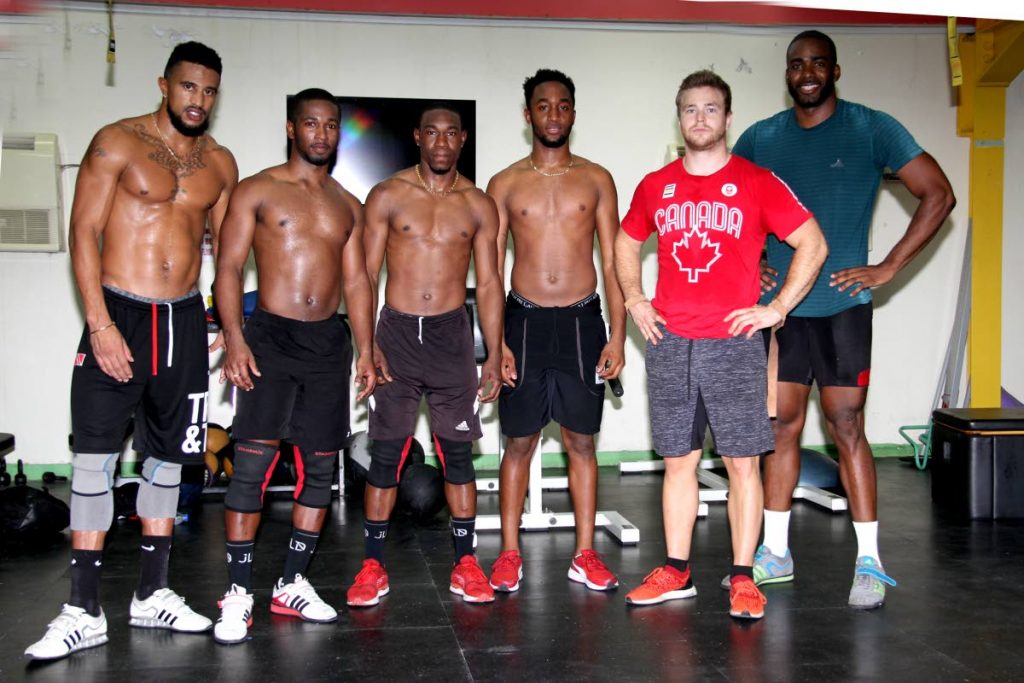Make use of the velodromes

CANADIAN Olympic track sprint cyclist, Hugo Barette yesterday warned cyclists to be careful with using the nation’s roads for training, and suggested that cyclists used the local velodromes to practice.
Barette, 27, set a Canadian record in the flying 200m time trial in 2014 with a time of 9.77 seconds, placed 13th in the 2016 Rio Olympics in the Kerin category and also holds Pan American Games gold medals in the sprint and team sprint categories, and was training over the past two weeks with the TT TT Olympic cycling team – Kwesi Browne, Njisane Phillip, Keron Bramble, Jabari Whiteman and Quincy Alexander.
He made the statement while responding to questions during an interview on the last day of the training session.
“The road can be dangerous and sometimes not on purpose,” Barette said. “There are a lot of people on the road and there is a lot of distraction, especially with phones. Whenever it comes to a point where you know a certain road is dangerous I would avoid it. Do another path. Even if it is a rougher path or not as nice a road. Or you could go to the velodromes.”
Barrette said even in Canada cyclists have to be careful on the road, even if the road is believed to be safe. He noted that as a cyclist, one does not have any protection when riding on the roadway, against cars.
“So always be careful, double-check, and never assume that someone is going to make a certain move.” he advised.
Eight cyclists have been killed while riding on the road this year. The latest of whom was Aaron Thomas, a 40-year-old taxi driver and cyclist, who was fatally hit by a pick-up truck, while riding on the Churchill Roosevelt Highway.

Barette said he visited the National Cycling Velodrome, Balmain, Couva while training here for the past two weeks, and described the facility as “crazy nice”.
“You guys have an amazing facility. It is a crazy nice velodrome and it is worth going and training over there. If you are a serious athlete and you want to train hard then go to this velodrome. It is a beautiful facility and it needs to be used to its fullest capacity. That is what they are there for.”
In the interview, Barett said he befriended TT’s cycling team while training in Los Angeles just before the 2016 Rio Oympics. They shared a common bond at the time, being from two countries which didn’t have their own velodromes, and trained together while there.
He said he and Phillip and the rest of the cyclists developed a close friendship, to the point where he described Phillip as his “best friend”.
He said although he came to train, he also wanted to visit his Trini friends and their families, and enjoy the sun as it is snowing heavily in his hometown.
“It is good to see all my friends and be in the sun,” he said. “In Canada I could continue training, but its cold and grey. “That is the best thing about coming over here. I could continue training but I still enjoy it and it doesn’t feel like work.”
He said that ability to train with and compete against different teams is one of the marked differences between current world champions and teams that are still developing.
“The big countries in cycling, Australia, Great Britan, New Zealand, they all have a really strong group and that is what makes their mark and makes them successful. They are always competing with each other. So, for me to come in to TT, we could race against each other and every one is a winner because every one is faster. And we need to go faster.”
Barette explained that sprint cyclist and current UCI Track Cycling World Champion Matthew Glaetzer averages at about 9.5 seconds on every track re races, while on average other cyclists average at about 9.7 seconds. He said the difference in times are massive when it comes to cycling, but it is a gap which can be lessened and closed completely with practice and team work.
“We are working in a sport where one thousandth of a second could make a difference between losing and winning. So you can imagine how every effort is important. Every day you need to show up and that is tough to do alone,” he said.


Comments
"Make use of the velodromes"